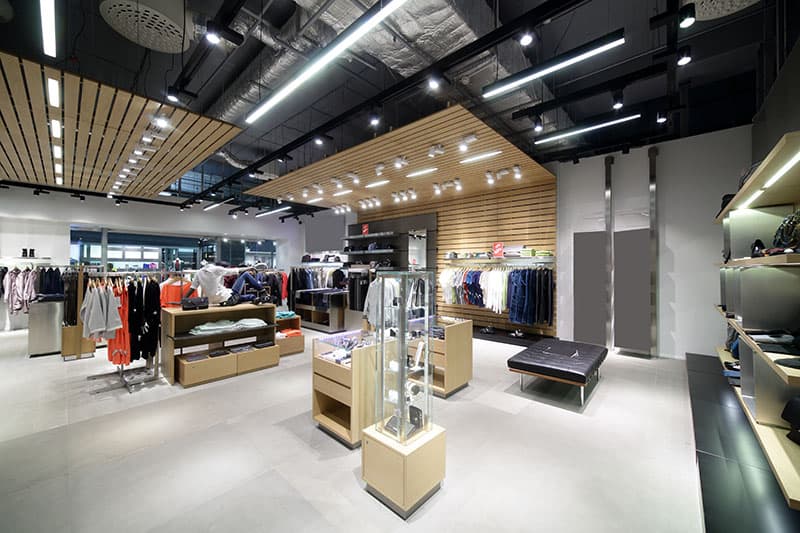Lighting plays an irreplaceable and central role in shaping the ambiance and elevating the entire shopping encounter within a retail establishment. The deliberate orchestration of light within your store transcends mere illumination; it is an artful endeavor that weaves together aesthetics, functionality, and psychological impact. In this intricate dance, the right interplay of light possesses the ability to command attention, to sculpt the mood, and to subtly nudge customer behavior in a direction that aligns with your business objectives.
Understand Your Store’s Aesthetic:
Before diving into lighting options, it’s crucial to understand your store’s aesthetic and branding. Are you aiming for a modern and minimalist feel, or do you lean towards a warm and cozy ambiance? Your store’s design and color scheme should guide your lighting choices. For example, track lighting with adjustable fixtures or led lighting for drop ceilings can spotlight specific displays, while pendant lights can add a touch of elegance to your space. By aligning your lighting choices with your store’s aesthetic, you create a cohesive and visually appealing environment.
Consider Natural and Artificial Lighting Balance:
Balancing natural and artificial lighting is essential for a comfortable shopping experience. Take advantage of natural light by strategically placing displays near windows. However, remember that natural light changes throughout the day, so supplement it with consistent artificial lighting. LED lights are energy-efficient options that closely mimic natural light. Be mindful of color temperatures – warmer tones can create a cozy atmosphere, while cooler tones lend a contemporary feel. Achieving the right balance ensures your store remains well-lit and inviting regardless of the time of day.
Highlight Key Display Areas:
Effective lighting draws attention to your merchandise. Consider accent lighting to highlight key display areas, such as new arrivals or high-margin products. Track lighting, recessed spotlights, or adjustable fixtures can be strategically placed to illuminate these focal points. By creating contrast between illuminated and unlit areas, you guide customers’ gaze to specific products, ultimately influencing their purchasing decisions.
Optimize Lighting for Different Zones:
Retail stores often have various sections with distinct purposes, such as product displays, checkout counters, and fitting rooms. Customize lighting for each zone to enhance functionality. Bright, evenly distributed lighting around checkout counters ensures a smooth transaction process, while fitting rooms benefit from flattering, color-accurate lighting that helps customers make confident choices. Adapting lighting to each area’s requirements enhances the overall shopping experience.
Energy Efficiency and Maintenance:
Selecting energy-efficient lighting not only trims operational expenses but also aligns with eco-friendly principles. LED lights serve as a prominent illustration of energy-efficient alternatives, boasting extended lifespans and lower energy consumption when contrasted with conventional incandescent bulbs. Additionally, consider fixtures that are easy to maintain, as regular maintenance ensures your lighting remains consistent and impactful.
Test and Adapt:
After selecting your lighting setup, it’s crucial to test its effectiveness. Invite feedback from staff and even select customers to gauge the ambiance and functionality. Make adjustments as needed, whether it’s repositioning fixtures or tweaking light intensity. Regularly assess how lighting influences foot traffic patterns and sales metrics. You can also take advice from suppliers and vendors regarding the choice of led light. Know that keeping in contact with suppliers can get save you money by buying led light wholesale. Flexibility is key – as trends and seasons change, your lighting setup might require modifications to continually meet your store’s evolving needs.
In conclusion, choosing the optimal lighting for your retail store involves a careful balance of aesthetics, functionality, and efficiency. By understanding your store’s aesthetic, balancing natural and artificial lighting, accentuating display areas, optimizing different zones, prioritizing energy efficiency, and consistently testing and adapting, you can create a well-lit retail environment that not only attracts customers but also enhances their shopping journey. Remember, lighting is a dynamic aspect of your store that can significantly impact customer perceptions and experiences.

